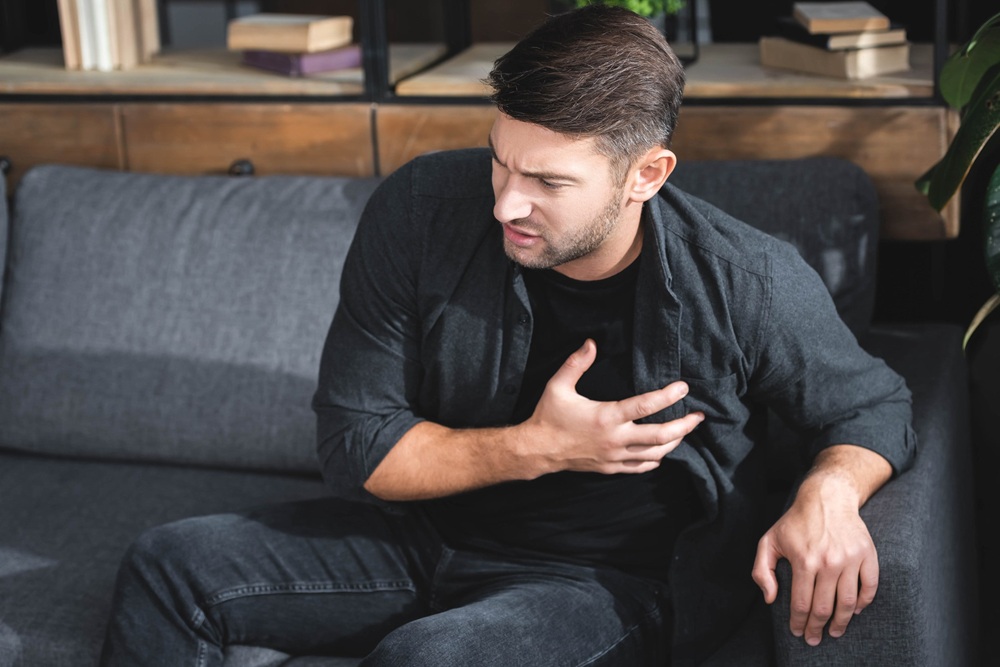There are few things more unpleasant than a panic attack. Getting one to stop can be complicated, but the strategies presented below can help.
The first thing to know is that you’ll want to have a strategy for today and a strategy for tomorrow. Today, focus on reducing your acute anxiety and panic symptoms. Tomorrow, you can turn your attention to reducing the likelihood you’ll have more panic attacks — either through therapy or medication.
Let’s start with today.
How To Stop A Panic Attack
- Understand what’s happening with your body. If you’re having a panic attack, your sympathetic nervous system has jumped into action. This is your body’s healthy, natural way to protect itself against a threat. Panic attacks happen when this part of our nervous system gets activated despite the lack of threat. These attacks are harmless. You are not in danger even though the attacks can feel dangerous. Panic attacks are unpleasant, temporary, and harmless.
- Try paced breathing. During panic attacks, our nervous system speeds up our breathing, which can make the panic more intense. Try to put the brakes on by slowing your breathing down to 5 or 6 breaths per minute if you can. This means that your inhalation and exhalation, combined, should take 10 to 12 seconds. Getting down to this pace may take a little time, and that’s ok. A timer or app can be helpful in this effort; try using the “Paced Breathing” app for android (configure this in advance for your desired breathing pace) or the Breathing App for iPhone.
- Notice your surroundings. Focus your attention on what’s around you. Notice what you see, hear, and smell around you. Get curious about what’s going on outside your body. When your thoughts return to your anxiety symptoms, bring your attention back to what you see, hear, and smell. Be willing to do this over and over again.
- Repeat the above as needed. If they don’t work, try TIP skills .If the panic attack is still going strong after the above efforts, try the steps listed on our TIP skills page.
What to Do Tomorrow
The panic attack has passed. Excellent! But your work isn’t over yet. Next, you need to determine: what’s driving your panic attacks? Here are some of the most common triggers, and what do do about each:
Thoughts: Some of the most common fears that lead to panic attacks include fears of passing out, going crazy, losing control, having a heart attack, or vomiting. If you suspect your panic attack might stem from one of these fears, ask yourself these two key questions: How likely is that, really? How bad would that be? Would I recover? Going through this mental process can be quite helpful to limit panic attacks. (For more detail on this, see our page on cognitive distortions and what to do about them.)
Situations: If you find that you have panic attacks only in specific situations — like going on subways or through tunnels — try to slowly limit how much you’re avoiding these situations. This process can be best facilitated with the guidance of a cognitive-behavioral therapist.
Traumatic memories: It’s common for panic attacks to be triggered by memories of reminders of a traumatic event from the past. If this is the case for you, seek a consultation with a therapist specializing in PTSD.
Rumination: Sometimes panic attacks happen after you spend a lot of time and mental energy dwelling on a troubling topic. If that’s the case for you, try some mindfulness practice to improve your ability to stop ruminating once you realize that’s what’s happening. Being able to take your mind off a troubling topic is a skill that mindfulness practice can help you improve.
Best Treatment Options
Therapy for panic attacks
Managing panic attacks requires making changes when you’re not having a panic attack. Just hoping you won’t have another one probably won’t work. If you need help determining which changes would help, consider a consultation with a therapist trained in cognitive-behavioral therapy. Panic attacks can happen for many reasons. A cognitive-behavioral therapist can help you understand why your panic attacks happen, and how to prevent future panic attacks.
Medication for panic attacks
There are multiple types of medication that are prescribed to help people with panic attacks. Which type is best? It depends on why you’re having the panic attacks to begin with. A mental health professional specializing in anxiety can help you understand whether you have an anxiety disorder as well as which one you have. Medication is prescribed based on specific diagnoses. If you’re interested in medication, consult with a psychiatrist or psychiatric nurse practitioner about which type of medication is best for you.
Benzodiazepines (e.g., Xanax, Klonopin, Ativan, Valium) are medications that can reduce anxiety and panic symptoms quickly. However, they are habit-forming and do nothing to address the causes or processes that led to the panic attack.
RELATED: How Negative Reinforcement Worsens Anxiety and Fosters Benzodiazepine Dependence
Other medications such as selective serotonin reuptake inhibitors (e.g., Prozac, Zoloft, Luvox, Celexa, Lexapro) are prescribed for daily use for some anxiety disorders. These daily medications don’t help immediately but can have a positive effect over time.
Whichever treatment you choose, remember: having a plan for today and a plan for tomorrow is the way to go if you’re wondering how to stop a panic attack.









